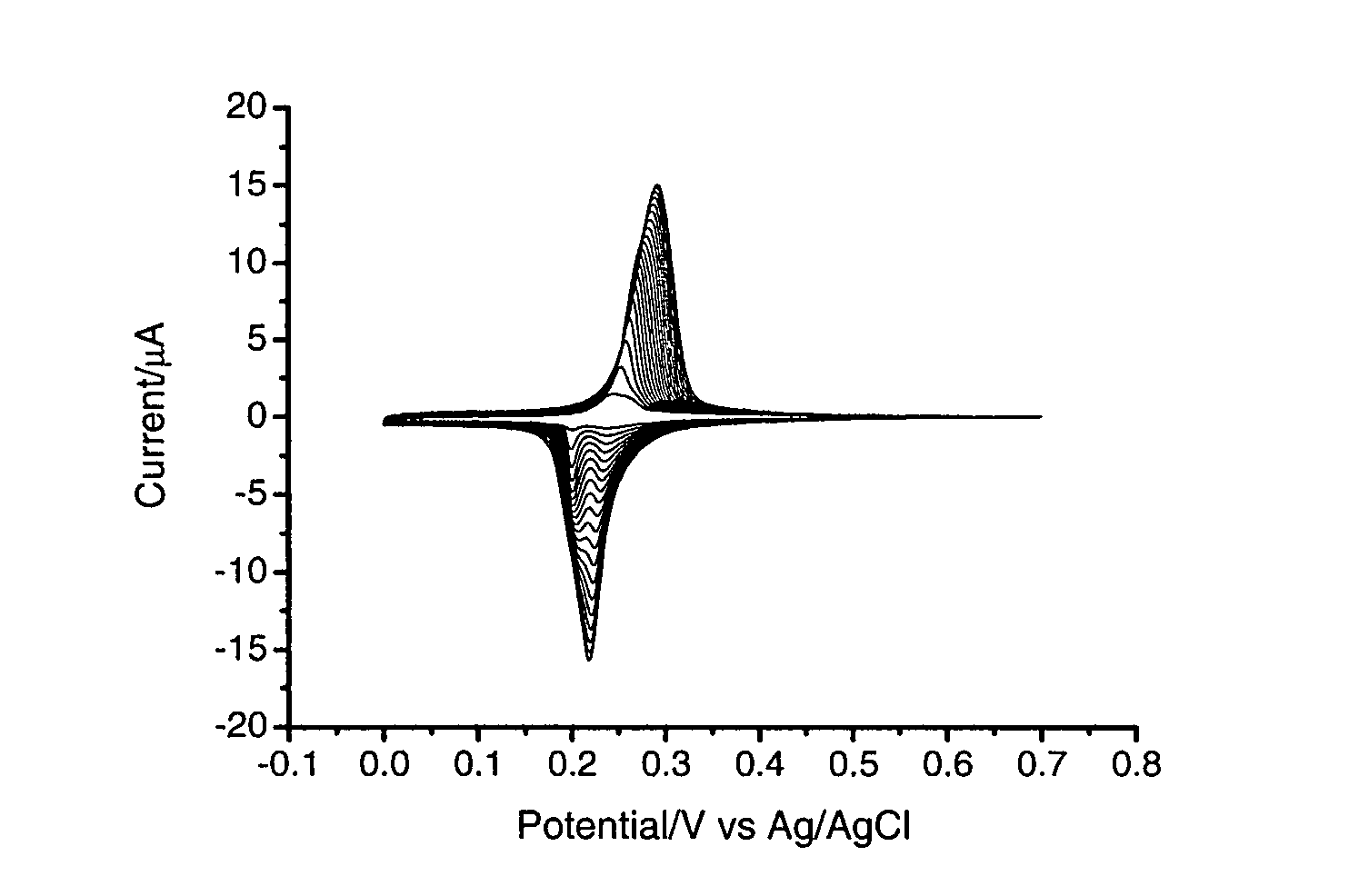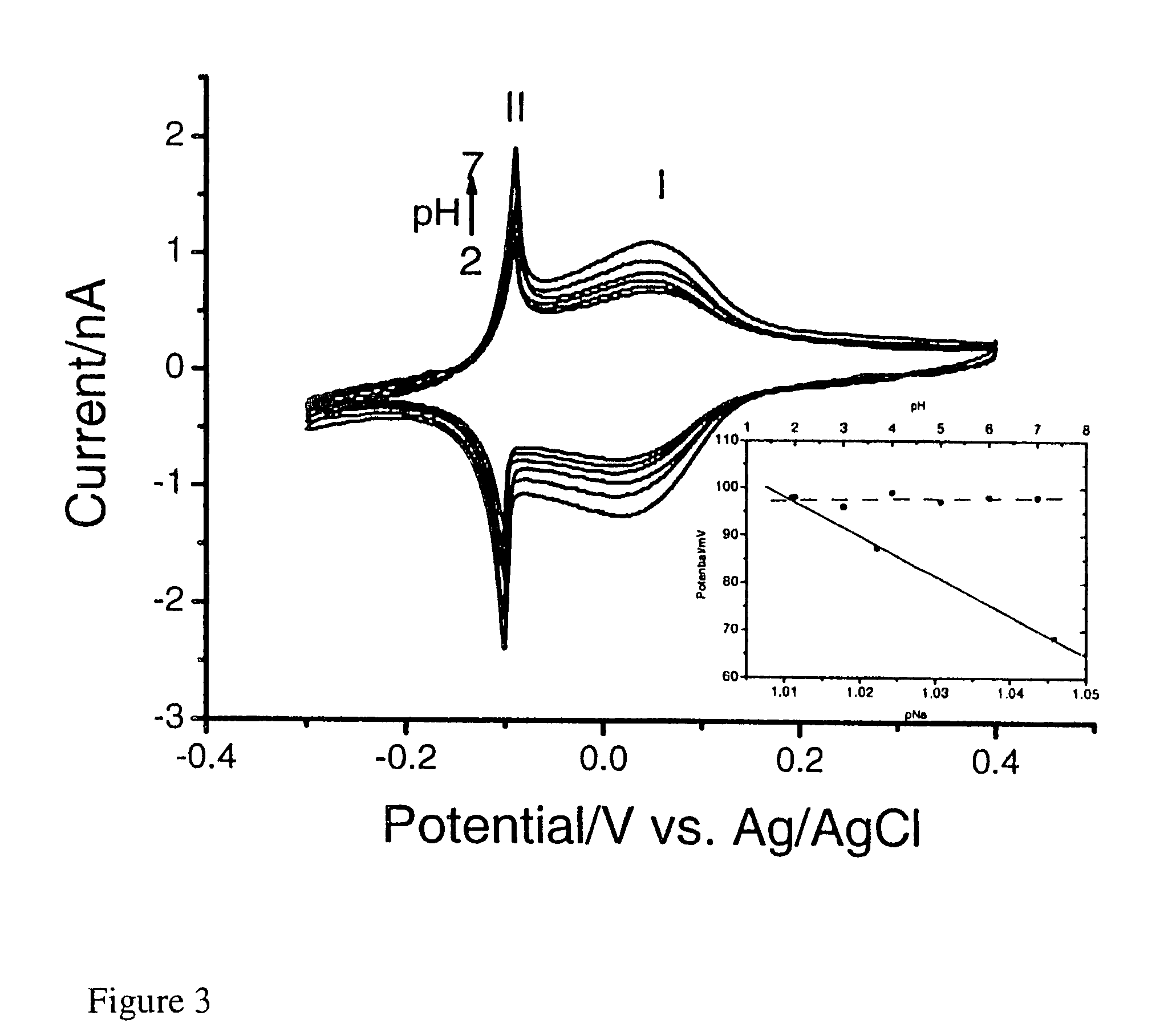Ruthenium purple biosensor
a biosensor and ruthenium purple technology, applied in the field of ruthenium purple biosensors, can solve the problems of sensor release from biological tissue that is not conforming to the conventional paradigm of chemical neurotransmission, the polymer film of these sensors is insufficiently robust to survive, and the detection of adenosine is mixed success,
- Summary
- Abstract
- Description
- Claims
- Application Information
AI Technical Summary
Problems solved by technology
Method used
Image
Examples
Embodiment Construction
[0173]Apparatus
[0174]A CH1 660B potentiostat was used to electrochemically deposit the different polymers and test the biosensor. The biosensor was used in vivo with a potentiostat interfaced to a PC by an A to D converter board (Data Translation). In all cases an Ag / AgCl was used as reference electrode and a Pt counter electrode. The electrochemical cell for deposition consisted of a capillary of 1.5 mm diameter and 2 cm length.
[0175]Electrodeposition of RP on the Surface of a Gold Electrode:
[0176]In a three electrode system, a pre-treated working gold electrode is dipped into a mixture (FeCl3 (1 mM)+KCl (40 mM, pH 2) and K4Ru(CN)6 (1 mM)+KCl (40 mM, pH 2), followed by electrochemical cycling from −0.2 to +0.7 V (vs. Ag / AgCl) for forty cycles at 50 mV / s (FIG. 1). The resulting RP modified electrode is heated at 80° C. overnight. In order to stabilise the RP membrane, electrochemical cycling is performed in a solution of RuCl3.
[0177]Polyaniline, where used, was formed using 10 μm an...
PUM
| Property | Measurement | Unit |
|---|---|---|
| diameter | aaaaa | aaaaa |
| size | aaaaa | aaaaa |
| positive voltage | aaaaa | aaaaa |
Abstract
Description
Claims
Application Information
 Login to View More
Login to View More - R&D
- Intellectual Property
- Life Sciences
- Materials
- Tech Scout
- Unparalleled Data Quality
- Higher Quality Content
- 60% Fewer Hallucinations
Browse by: Latest US Patents, China's latest patents, Technical Efficacy Thesaurus, Application Domain, Technology Topic, Popular Technical Reports.
© 2025 PatSnap. All rights reserved.Legal|Privacy policy|Modern Slavery Act Transparency Statement|Sitemap|About US| Contact US: help@patsnap.com



